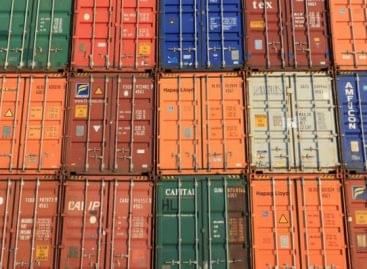Dependence on the American market can pose a serious competitive disadvantage in exports
The new trade agreement between the United States and the European Union signed on July 27th will change the level of tariffs imposed on products coming from Europe. The 15% tariff that has just been introduced may also bring about a significant change in the export activities of large domestic companies, especially those that have also identified the United States as a target market.
“Based on the data from our K&H Large Company Growth Index research, we see that large companies are actively seeking new export opportunities. However, the US tariff increase may be a difficult factor for them, and it is questionable whether this will only slow them down or even completely turn them back towards the domestic and European markets”
– highlighted Tibor Bodor, Head of K&H’s Corporate Business.
“Although the current tariff increase is significant compared to the previous situation, it is not exceptional in a global context, especially compared to other competing countries. However, the future of export activity depends on many factors: what kind of product it is, how substitutable it is in the American market, how much competition there is, and how flexible the given company is in terms of pricing or production transformation”
– explained Tibor Bodor.
“The current agreement should not be interpreted only as a tariff increase, but as part of a larger economic package,” – emphasized the expert. – “It is important to monitor how the key factors that may affect the business environment in the long term change.”
K&H’s corporate portfolio also includes large companies that conduct American export activities. Although the tariff increase may affect them sensitively, the impact will be company-specific: much depends on how well they manage to retain their American markets and whether they can find new target countries, whether within the EU or on other continents.
“The future largely depends on how specific a given company’s product is to the American market. If it is closely tied to American standards, adapting it to the European market may require separate resources, both in time and money,” the expert added. – “If companies are not able to quickly find new export markets, they may find themselves at a serious competitive disadvantage. Although the United States will apply a 15% tariff on automotive products from the European Union, including our country, from the beginning of August, the legislative process to finalize the agreement is still underway at the EU level. Thus, it will be possible to draw meaningful conclusions about the practical effects of the agreement next year, and it will be worth comparing practical experiences with current forecasts,” added Tibor Bodor.”
Related news
Hungarian exports are gaining new momentum: medium-sized companies are increasingly managing exchange rate risk and opening up to new markets
🎧 Hallgasd a cikket: Lejátszás Szünet Folytatás Leállítás Nyelv: Auto…
Read more >KSH: the foreign trade surplus in goods was 713 million euros in October; the volume of exports was 3.1 percent lower, and that of imports was 1.1 percent higher than in the same period of the previous year
🎧 Hallgasd a cikket: Lejátszás Szünet Folytatás Leállítás Nyelv: Auto…
Read more >Poultry meat exports increased, pork exports decreased
🎧 Hallgasd a cikket: Lejátszás Szünet Folytatás Leállítás Nyelv: Auto…
Read more >Related news
THE LATEST ISSUE OF TRADE MAGAZINE HAS BEEN PUBLISHED!
🎧 Hallgasd a cikket: Lejátszás Szünet Folytatás Leállítás Nyelv: Auto…
Read more >Even though half of Hungarians are stressed about Christmas gifts, we don’t compromise on quality
🎧 Hallgasd a cikket: Lejátszás Szünet Folytatás Leállítás Nyelv: Auto…
Read more >Hidden imports in the European food chain – how is the EU internal market changing?
🎧 Hallgasd a cikket: Lejátszás Szünet Folytatás Leállítás Nyelv: Auto…
Read more >







